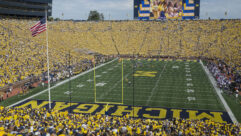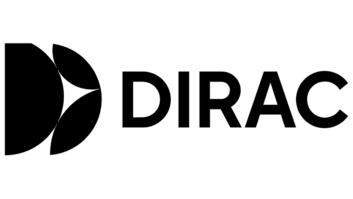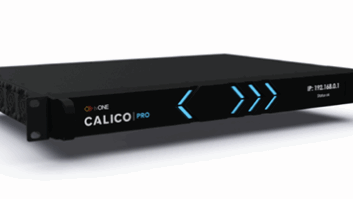
Mitsubishi SE1U
May 1, 2004 12:00 PM,
By Jeff Sauer
Mitsubishi SE1U projector
It’s been about a year since the first projectors with a street price of less than $1,000 were released, and there are now several models in that category from a variety of companies. All are SVGA, LCD based, and 4½ to 7 pounds and come with few thrills. Mitsubishi’s new 1200-lumen SE1U matches all of those markers and even awkwardly cuts a few features. But when it comes to pay dirt — picture quality — Mitsubishi has something special at the price.
There should be no surprise that this value-oriented sector of products is growing quickly and that more manufacturers are throwing their hats into the ring. Money talks, and these landmark low price points are bringing new users into the fold. Individual companies can’t afford to miss such a market that could bring potential lifetime consumers into the fold.
From small businesses, educational organizations, and nonprofits, there’s always been plenty of interest, even demand, for projection and display technology. However, past prices have been prohibitive. Although just a few thousand dollars for a quality model may seem like a steal by the standards of just a couple years ago, it pretty much still ends the discussion for budget-strapped groups. But at less than $1,000, the price of large display is no longer an order of magnitude above that of desktop or any other display; it’s within the realm of possibility for many more users.
The trouble for the industry is that, at these prices, margins are extremely low, and there’s very little room for companies to maneuver. There are a lot of me-too products in the space and little way to differentiate. Companies can’t easily add features without adding cost-of-goods expenses and jeopardizing the higher-end, higher-margin product lines that keep the companies viable. So for now, at these price points users are likely to see only small steps toward specific advantages.
Not surprisingly, then, the SE1U has plenty of mediocrity in its bare-bones design. The SE1U is housed in a nice cool-blue-colored chassis, a color Mitsubishi launched last summer, but it’s a generic box that’s bigger than you’d expect for a projector that weighs 4½ pounds. It’s physically light enough to travel with, but its size necessitates an extra carrying bag (there’s a misprint in the brochures and on the Web that lists the height at 2.1 inches — it’s really 3.1 inches).

There isn’t much interesting about the bare-bones connectivity, either, but it is pretty much what you’d expect to find in a sub-$1,000 projector. On the back panel there’s an RCA composite input, S-video, and an 8-pin RS-232 port. There’s just a single audio port for all inputs, but the 1W monaural speaker is strictly utilitarian and best avoided anyway. The one addition is that the SE1U has both a 15-pin RGB input, which doubles as the component video input (conversion cable not supplied), and an RGB pass-through. With that pass-through, Mitsubishi gives the SE1U a commonly requested feature for educational usage and government bids, two price-sensitive market segments.
The remote control that comes with the SE1U is not at all special, nor are the navigation arrows and dedicated buttons for Source, Keystone, and Auto position found on the top of the unit. What’s more, Mitsubishi’s onscreen menus are minimal, with, for example, no presets to adjust color temperature for different sources or ambient light situations nor the ability to save multiple settings.
The most obvious omission in the SE1U is a zoom lens. There’s a cutaway on the top to allow access to the manual focus ring, but that’s it. There is no optical zoom for adjusting picture size, and that hurts the unit’s ease of use and ease of setup. On the one hand, the SE1U is small enough that it should be easy enough to adjust the picture simply by moving the unit a little forward or back. However, manufacturers have omitted a zoom lens before in an attempt to cut components and ounces and break early size and price barriers for microportables. Ultimately, users always want a low price, but they are generally less happy about giving up features, especially obvious and expected ones like optical zoom. That can give a product the feeling of being cheap.
STAND AND DELIVER
Yet for all that mediocrity, the SE1U delivers where it counts most: image quality. Yes, it starts with a lower, older native SVGA resolution. That begets some almost unavoidable shortcomings, but those are the same inherent shortcomings of all the other projectors in the same price class. In addition, Mitsubishi has done a fine job of scaling both computer and video content to greatly minimize that resolution drawback, particularly for such an inexpensive model. With high-definition source material, the SE1U looks like a million bucks — well, at least a few thousand. Indeed, I’d pick this over some I’ve reviewed lately at two and three times the price, even some with native XGA.
Strong and vibrant color has a lot to do with the impression of sharpness and clarity. Mitsubishi has supported sRGB for data mode in all of its projectors for several years. That is here as well, but even with video, saturated colors are very good. What’s more impressive for a projector in this price class is that little of that color depth is lost with subtler colors. The SE1U is rated at just 1200 lumens, and I’d expect that number to yield a poor range of gray scales. But the projector does a good job of balancing brightness and contrast across a range of dark and bright scenes.
Unfortunately, on the test bench, I didn’t even get the 1200 lumens but, instead, a more modest 1069 lumens at its brightest and just 993 ANSI lumens as an average across the entire picture. That’s a good 20 to 30 percent lower than other sub-$1,000 projectors that I’ve tested. On the other hand, Mitsubishi should get credit for a fairly solid brightness uniformity of 83 percent. That’s not great, but it’s a good deal better than many of those brighter models in the class.
From an LCD-based projector, I’d expect a full on/off contrast ratio of between 300 and 400:1 and that’s just what I found here (303:1). Against the ANSI checkerboard, I measured 109:1, and that also fits the price category. The SE1U also had no trouble syncing efficiently to a variety of sources’ inputs, though it does not cycle through to find a source. Instead it requires that you enter the Source menu and manually select the input.
NO FRILLS, ONE THRILL
With the exception of the handsome blue color, there aren’t many frills with the SE1U. There are even some disappointing omissions, such as the lack of a zoom lens and the lack of depth in the menus. But remember the price. It’s a bare-bones number that yields bare-bones features. With the SE1U, more important is the image quality you get for that money. That’s the frill here — and the thrill — and that’s a pretty good bottom line.
SPECIFICATIONS
Brightness
1200 ANSI lumens
Contrast
400:1 full on/off
Native Resolution
SVGA (800 × 600)
Configuration
3 × 0.55″ P-Si LCD panels with Micro Lens array
Light Source
130W UHP lamp (rated 2,000 hours)
Lens
Manual focus, F=1.8 fixed lens
Zoom
Digital zoom only
Projection Distance
4.98′-37.40′
Screen Size
40″-300″ diagonal
Throw Ratio
60″ @ 5.6′
Keystone
Vertical only
Speakers
1W mono
Dimensions (W×H×D)
11.4″ 5 3.1″ 5 8.1″
Weight
4½ lb.
PRODUCT SUMMARY
Company:
Mitsubishi
www.mitsubishipresentations.com
Product:
SE1U
Pros:
Very good color and image quality for the money.
Cons:
No zoom lens, minimal menu control, minimal connectivity.
Applications:
Image projection for nonprofits, education, and other budget-conscious entities.
Price:
$995










